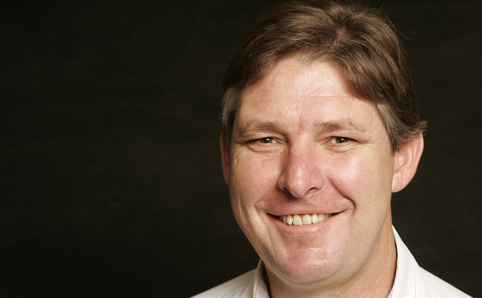 |
|
Dr Holtzhausen’s appointment reflects well on the quality of exercise and sports medicine presented at the university.
20 March 2012
|
Dr Louis Holtzhausen, Head of the university’s Department of Sports and Exercise Medicine, has been selected by the South African Sports Confederation and Olympic Committee (Sascoc) as team doctor for the more than 300 athletes that will represent South Africa at this year’s Olympic Games in London.
“This is definitely one of the most important highlights of my career, in which I’ve worked with professional athletes and top sporting people,” says Dr Holtzhausen, a recognised South African academic in Sports Medicine.
“It is not only an honour to be appointed as team doctor for the South African Olympic Team. It is also a privilege to represent the UFS. The fact that Sascoc approached me reflects well on the quality of exercise and sports medicine that we present here at the university,” says Dr Holtzhausen.
Dr Holtzhausen says he has already worked with some of the athletes in the Olympic Team. These include members of the South African boxing team, the hockey team, as well as track and field athletes that have been preparing for the Olympic Games at the university’s High Performance Unit.
There is, however, hard work ahead for Dr Holtzhausen. His work will start before the team leaves for London in July. “I have to ensure that all the athletes are healthy and that everyone’s immunisation programmes are up to date. We also have to ensure that no athlete takes banned substances,” he says.
During the Games, Dr Holtzhausen will keep an eye on the optimal functioning of every athlete. “Anything that could hamper them medically will be sorted – whether it’s a broken ankle or a cold,” he says.
He will also see to it that medical services are available during the competition. Immediate medical assistance will be available, especially at high contact sports like boxing.
Dr Holtzhausen has also been team doctor for Team South Africa at the All Africa Games, the biggest sporting event in Africa. He was recently appointed as a member of the International Committee and Coordinator for Africa of the worldwide Exercise is Medicine project. This project proposes that exercise be used in the prevention of chronic disease in the general population, as well as in the treatment of people with existing chronic diseases. Dr Holtzhausen is also an honorary member of the South African Sports Medicine Association (SASMA). This membership is awarded to members of the medical and scientific community who make significant contributions to the advancement of sports medicine.
Dr Holtzhausen is a member of the Vice-Chancellor’s Prestige Scholars Programme.
The goal with the Prestige Scholars Programme is to select no more than 100 of the most promising young scholars (typically holding lecturer status) and to make substantial investments in their development towards the professoriate. A tailored, intensive programme of support has been designed which combines international placement working alongside leading scholars in the discipline of the prestige scholar, with intensive mentorship and support from within the university.